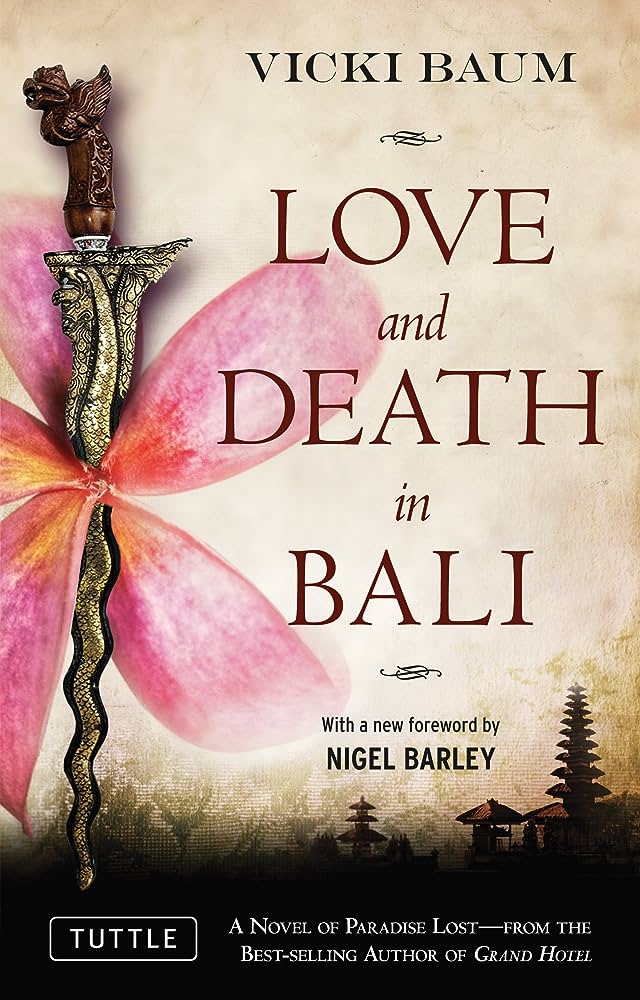Love and Death in Bali: Still good, a hundred years later

Author Vicky Baum, finding Hollywood to be so crowded she felt as though “fifty people were using [her] toothbrush,” embarked on a world tour in 1935 which included stops in Egypt, Mexico, China, Japan and nearly a year on the Indonesian island of Bali, then under Dutch rule. Fueled by her interest in the culture, the people and, ironically the worldwide “Bali craze” of the 1930s, she returned the following year to write the book which became Love and Death in Bali.
First published in German in 1937, the novel follows Pak, a Balinese farmer who grows rice to provide for his growing family and also raises cocks for fighting. In the background of Pak’s village life is the impending puputan, a mass ritual suicide preferred by the Balinese to surrendering to a numerically superior enemy.
The enemy in this case is the Dutch, who used the pretext of a plundered Chinese ship to invade the island in 1906 to expand their colonist holdings.
Pak is obliged to produce enough for both his family, which grows from one wife to two during the novel as well as two children, and to please the capricious Balinese raja, Alit. Pak’s brother Raka has his eyes gouged out by the raja for falling in love with one of Alit’s many wives. The raja then confiscates Pak’s best fighting cock.
All the while, the Dutch, who had controlled part of the island since the 1860s, are demanding compensation from the raja for the goods stolen from the shipwreck. At the same time, the Dutch are negotiating with the Chinese, who play them for fools. The threads culminate in an invasion, which forces Pak to make a crucial choice.
The book is not an explicitly political work. Rather Baum deftly gives the reader lush depictions of the island terrain and compelling characters whose personal narratives drive the story. The politics happens in the background but we see how the decisions of Dutch diplomats and Chinese merchants impact the lives of Pak and his family and neighbors.
Baum’s treatment of local life, colonization and historical events is surprisingly evenhanded. This book is not The Birth of a Nation or King Solomon’s Mines. Pak and the rest of the Balinese characters are portrayed as complex people who are navigating the challenges they face to the best of their abilities, even if those challenges are sometimes self-imposed cultural demands.
It is possible Baum relied on her own history of discrimination to portray the Balinese sympathetically. Born to a wealthy Jewish family in Vienna in 1888, she trained as a harpist before turning to writing. In 1929, she published Grand Hotel, which became a runaway bestseller and was made into a highly successful movie.
An invitation to adapt the book into the screenplay in 1932 allowed Baum to leave Austria and emigrate to the United States, allowing her and her family to escape the horrors of the Second World War.
On her first trip to Bali, she befriended Walter Spies, the famed Russian-born German painter who is credited with bringing worldwide attention to the island. Baum died of leukemia in 1960, having published more than 30 books.
Love and Death in Bali is a fascinating look at Balinese village life a century ago and is still worth the read today. You can buy it at the American Book Center.
Thank you for donating to DutchNews.nl.
We could not provide the Dutch News service, and keep it free of charge, without the generous support of our readers. Your donations allow us to report on issues you tell us matter, and provide you with a summary of the most important Dutch news each day.
Make a donation